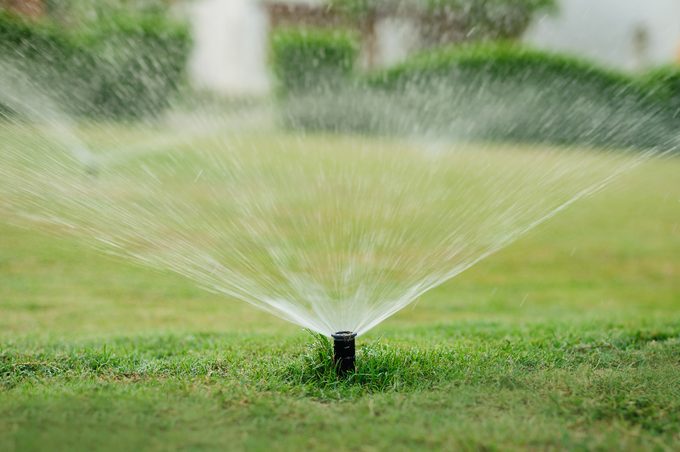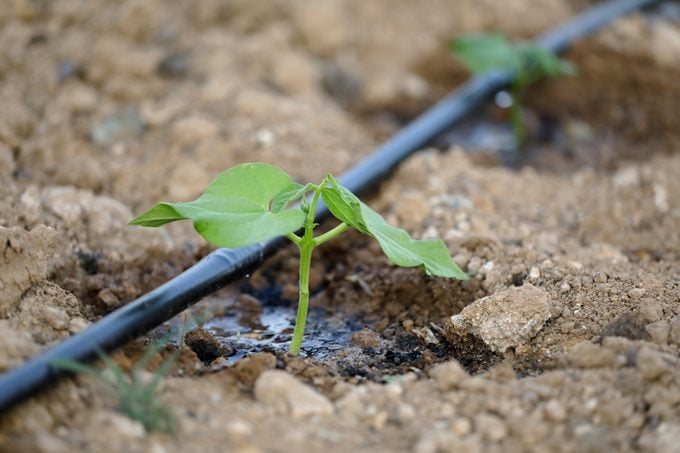The point of an irrigation system is obvious: Plants need water, and people aren’t always around to provide it. I came to appreciate the value of an automated irrigation system during the CZU Lightning Complex wildfire that engulfed my neighborhood in August 2020.
During the three-week evacuation period, no one was around except for a few brave souls who defied the evacuation orders to stamp out spot fires. Those folks likely saved our home and those on the entire lane. They had no time to look after gardens. So after three weeks of smoke so dense you needed headlights in the afternoon, I expected the garden to be toast when the evacuation lifted and I returned home.
Nope. Thanks to our battery-operated, gravity-fed drip system that draws water from a storage tank on a hill, the garden not only survived, it was thriving. Luckily our tank water wasn’t needed for fire control, so it went to the garden in two 20-minute watering cycles every day.
The electricity had been off and the well pump out of service, so the tank was almost empty. It quickly refilled when power was restored, and we had a great harvest that year.
What Is an Irrigation System?
An irrigation system distributes water where it’s needed.
Since the dawn of civilization, people have been digging furrows or terracing hillsides to control the flow of rainwater. These low-tech techniques, still widely used in many parts of the world, depend on the rain nature supplies.
Modern landscapers and gardeners have access to electricity and more sophisticated watering methods that include valves to control water flow, pipes to transport it and emitters to distribute it.
Small irrigation systems for gardens and lawns and large industrial systems for crops work on the same principles, differing mainly in size and scale. Since water usage is a growing concern in an increasingly thirsty world, water efficiency is as important as size when choosing an irrigation system for the home or garden.
Types of Irrigation Systems
At least eight types of irrigation systems exist, but some are only for large-scale farming operations. The ones of most interest to homeowners and small-scale gardeners include the following:
- Surface irrigation: This involves reshaping the land to direct surface water to crops and gardens. It’s efficient but labor-intensive, and only works in areas that get sufficient rainfall.
- Manual irrigation: You can carry buckets of water or hook up a garden hose. Depending on how you do it, this can also be an efficient water-delivery method.
- Sprinkler irrigation: Sprinklers are emitters fed by above-ground or underground pipes or hoses that spray water into the air. It then falls on plants like rain. They can be controlled by electric valves that automatically switch on and off at predetermined times of the day. Sprinkler systems are common, but they aren’t particularly efficient because a lot of their water evaporates.
- Drip irrigation: Highly efficient, first used in arid Israel. This system features above-ground tubing that delivers water to tiny emitters or 1/4-inch soaker hoses. These drip water into the ground to feed plant roots. A drip system loses little water to evaporation and is easy and inexpensive to install, but needs frequent maintenance because the emitters clog.
Irrigation System Cost
Manual and surface irrigation are the least expensive systems, costing nothing to install except, in the latter, labor to move earth. For your home or garden, you’ll choose between a sprinkler or drip system. A sprinkler system is by far the more expensive option.
Sprinkler system

A sprinkler system is the only practical residential choice, costing from $0.20 to $1 per square foot of lawn. The average installation cost nationwide is between $1,700 and $3,500, depending on these factors:
- Size of the property: Larger properties need more pipes and more sprinklers.
- Terrain and soil conditions: Installation is more difficult on slopes and in rocky, compacted soil.
- Layout: Some areas may need more water (and thus more sprinklers) than others.
- Number of zones: A separate value controls each zone, and all zones are connected to the same water supply.
- Labor: You can DIY a sprinkler system with hoses and above-ground pipes. But to bury pipes, you’ll need equipment to dig trenches and pros to run the equipment.
- Brand: Some sprinkler brands cost more than others. Choosing the cheapest one isn’t always the best idea, since the more expensive ones tend to last longer.
- Permit: Some communities require a permit to install a sprinkler system, adding to the cost.
Drip system

The average cost to install a drip system is about $80 to $100 per 100 feet of watering, and most people end up paying between $225 and $415 for a complete system. Factors influencing cost include:
- DIY or professional installation: Because all tubing is above-ground, installing a drip system doesn’t involve any digging, so it’s DIYable. You can save big-time by putting it in yourself.
- No permit required: You don’t have to worry about this added expense.
- Quality of components: Off-the-shelf components for DIYers tend to be less expensive than the ones pros use, but don’t last as long.
- Layout: A drip system waters each plant individually. So the more plants you have, the more tubing and emitters you need, particularly if the plants are spaced far apart.
Irrigation System Installation
Because it involves digging trenches for pipes, a sprinkler system is more difficult to install than a drip system. The process involves placing water valves next to the house or in the yard, running water pipes and electrical wires to them, then connecting each valve to a network of pipes that run throughout the yard.
Tees connect individual sprinklers to the branch pipes. Then the trenches are backfilled, leaving the sprinklers at ground level or sticking up out of the ground. A drip system can controlled by sprinkler valves, but it’s common to connect one to an existing outdoor spigot. In a simple installation, you add a filter, backflow preventer and timer to the spigot.
Run 1/2- or 5/8-inch poly tubing from the spigot, snake it through the area to be watered, then connect an emitter or a length of 1/4-inch soaker tubing in each place where there’s a plant needing water. Tubing fittings and emitters all have push-together connectors, so installation requires no glue and few tools.
Article source here: Homeowner’s Guide To Irrigation Systems


No comments:
Post a Comment